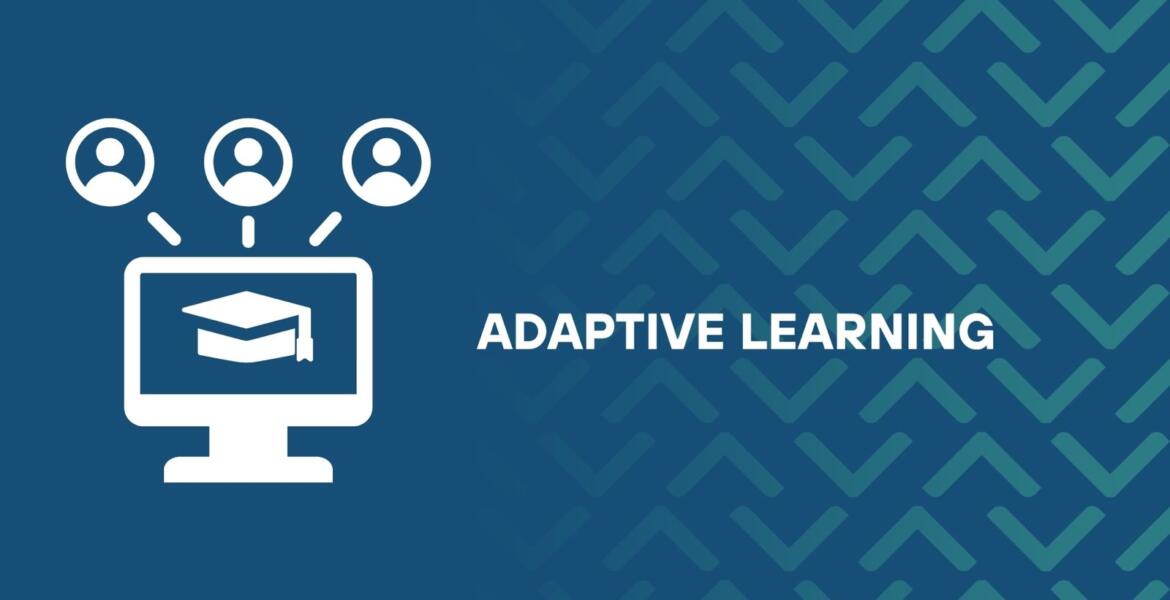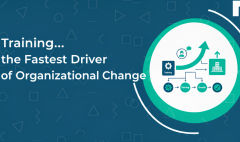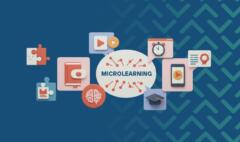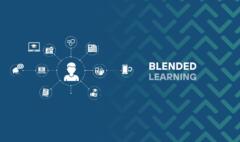Adaptive Learning and Its Role in Developing Modern Training Centers
Introduction
In the midst of the rapid digital transformations sweeping educational and training systems worldwide, the concept of adaptive learning emerges as one of the most important innovations revolutionizing the way knowledge is delivered and customized according to learners’ abilities and needs. Training centers are no longer immune to these developments; rather, they are more than ever required to adopt adaptive learning technologies to ensure effective training outcomes that help build qualified personnel capable of facing labor market challenges.
In this article, we present a comprehensive overview of adaptive learning, the technologies behind it, its role in enhancing academic performance, and how training centers can benefit from this advanced model to create more effective and responsive learning environments.
1. The Concept of Adaptive Learning
Adaptive learning is a modern educational approach that relies on artificial intelligence (AI) and data analysis to deliver personalized training experiences tailored to each learner’s style, academic level, pace of comprehension, and interests. The goal is to narrow the gap between different learners’ abilities by delivering the right content at the right time.
Unlike traditional education that assumes all learners can learn the same way and at the same pace, adaptive learning acknowledges individual differences and creates a custom learning path for each learner. For example, two trainees in the same program may study the same topic using different methods one through videos, the other through text with interactive exercises based on how the system analyzes their learning styles.
This approach makes learning more effective and enhances the learner’s ability to understand and apply knowledge, as the content feels personally directed rather than generic.
2. The Historical Development of Adaptive Learning
Adaptive learning originated as an extension of e-learning technologies when educational systems began collecting and analyzing learners’ behavior on digital platforms. With advancements in AI and big data processing, these systems evolved to make intelligent instructional decisions such as when to review material, present a test, or change teaching style.
Early formal attempts to develop adaptive learning systems emerged in major U.S. universities, which piloted platforms that responded dynamically to learners’ needs. These efforts later expanded into vocational training environments.
In the Arab world, adaptive learning is still in its early stages, though promising initiatives are emerging in leading training centers, especially those offering career focused technical programs.
3. Technologies Powering Adaptive Learning
Adaptive learning depends on a suite of advanced technologies that help personalize the learning content for trainees. Key among these are:
– Intelligent Learning Management Systems (LMS)
These systems record every learner content interaction, test performance, and time spent on activities. Based on this data, customized learning paths are created.
– Artificial Intelligence and Machine Learning
AI predicts learner behavior, recommends suitable activities, and presents alternative content if a concept is not well understood. Machine learning enables the system to self improve over time.
– Learning Analytics
By collecting and analyzing detailed learner progress data such as number of attempts, response time, and level per module training plans can be adjusted in real time for each trainee.
Together, these technologies form the backbone of a fully adaptive learning system that places the learner at the center not as a passive recipient but as an active participant.
4. AI’s Role in Personalized Adaptive Learning
AI is the primary engine behind adaptive learning’s ability to personalize learning content and paths. It operates through complex algorithms that analyze data and identify each learner’s learning pattern. Key roles include:
– Recommending Relevant Content
Based on learner behavior and progress, the system suggests videos, articles, exercises, or tests suited to their level.
– Advanced Auto Assessment
Instead of standard tests, AI provides adaptive assessments that adjust based on performance, accurately identifying strengths and weaknesses.
– Real-Time Interaction
AI provides instant feedback during exercises and helps correct errors without needing human intervention.
These capabilities make AI a genuine partner in training more than just a tool offering unprecedented potential for exceptional learning experiences.
5. Impact on Academic Performance
One of adaptive learning’s main goals is to raise learners’ academic performance. Studies show that learners exposed to adaptive learning score higher in final assessments and develop deeper understanding compared to those in traditional settings.
In a training center, this improvement reflects in faster content comprehension, reduced time to complete courses, and higher skill mastery. Learners also feel more motivated as they witness tangible progress, boosting their confidence and driving continued learning.
Additionally, adaptive learning enables trainers and administrators to closely monitor each learner’s development, providing timely support and ensuring training objectives are met efficiently.
6. Enhancing Learner Engagement
A major challenge for training institutions is maintaining learner engagement throughout a program. Bored or disconnected learners are less likely to engage or acquire skills. Adaptive learning offers an innovative solution through content personalization and real time interactivity.
– Responsive Content Delivery
The system adjusts the presentation style or type of exercises based on the learner’s level of engagement or comprehension. For instance, if a concept isn’t grasped, it can be reintroduced through video, infographic, or simulation keeping the learner engaged.
– Customized Interactive Activities
Adaptive systems provide interactive exercises tailored to each learner’s level. This personalization helps learners feel “understood,” boosting enthusiasm.
– Encouraging Intrinsic Motivation
Progress indicators and system generated motivational messages enhance learners’ sense of accomplishment and inspire them to continue learning.
These mechanisms transform training from a rigid routine into a stimulating journey, increasing engagement and achievement.
7. Adaptive Learning in Blended Classrooms
Blended learning combines in person classroom instruction with online digital learning, an increasingly popular model, especially post remote learning expansion. Adaptive learning plays a vital role in making this model successful.
– Shared Roles Between Trainer and System
In a blended classroom, the trainer acts as a facilitator, while the smart system manages content delivery and learner progress. The trainer then uses system outputs to tailor support, such as review sessions or customized assignments.
– Multiple Media and Learning Paths
A learner may start the day with online exercises, attend a live session for discussion, and finish with self paced videos. This media variety enhances the overall learning experience.
– Real Time Performance Monitoring
The system enables trainers to track each learner’s performance instantly, allowing timely and precise intervention unlike traditional models relying solely on periodic assessments.
Adaptive learning is thus the backbone of successful blended classrooms, bridging technology and live instruction effectively.
8. Adaptive Learning in Training Centers
Modern training centers must move beyond generic course offerings and instead deliver personalized learning experiences. Adaptive learning enables this shift and transforms center performance.
– Customized Career Paths
Centers can assign trainees to suitable learning paths based on evaluations of their skills and prior knowledge. For example, a trainee with accounting experience but lacking digital skills receives a different path from a tech savvy peer needing financial literacy.
– Reducing Dropout Rates
Many learners quit due to content misalignment with their levels or interests. Adaptive learning significantly reduces this by tailoring programs to individual needs, enhancing retention.
– Strengthening Market Position
Centers adopting adaptive learning gain a competitive edge by offering high quality, personalized programs that appeal to a broader learner base.
9. Challenges Facing Adaptive Learning
Despite its advantages, implementing adaptive learning in training centers comes with several challenges:
– Technical Challenges
Adaptive systems require robust infrastructure servers, stable networks, and advanced software needing constant updates not always available in all centers.
– Lack of Qualified Staff
Implementing adaptive learning demands trainers and instructional designers who understand the model and data analysis, still scarce in many Arab educational contexts.
– High Implementation Costs
Adaptive learning systems are significant investments in software and human capital. This financial barrier can hinder adoption, especially in smaller centers.
– Data Privacy and Security
Large scale data collection raises concerns about ethical usage and privacy. Clear policies and governance standards are essential.
10. Integration with Global Learning Systems
One major goal for 21st century training centers is global integration through internationally recognized education systems. Adaptive learning supports this goal.
– Compliance with Global Standards
Adaptive systems often follow standards like SCORM or xAPI, allowing seamless integration with global platforms and facilitating certification recognition.
– Strategic Partnerships
Adaptive centers become attractive partners for international institutions seeking modern, intelligent learning systems.
– Global Learning Performance Databases
With adaptive learning, performance data can be centralized and compared across countries and institutions supporting evidence based educational policies.
11. Importance of Adaptive Content Development
Technology alone does not guarantee success; adaptive learning requires specially designed content that aligns with its philosophy of flexibility and customization.
– Multi Path Content Design
Content should include various paths for the same concept: videos, text, hands on exercises, and interactive activities so the system can choose the best fit for each learner.
– Modular and Editable Units
Training modules must be concise, focused, and rearrangeable to allow the adaptive system to restructure content based on learner progress.
– Collaboration Between Experts and Designers
Creating adaptive content requires close cooperation between subject matter experts, instructional designers, and developers to ensure academic rigor and technical flexibility.
Without adaptive friendly content, even the best technologies fall short.
12. The Learner’s Role in Adaptive Learning
Despite the system’s personalization, adaptive learning strengthens the learner’s role. It turns learners into active participants in their training journey.
– Building Self-Responsibility
Trainees learn to manage their time, evaluate their progress, and identify their needs fostering 21st century skills like self directed learning.
– Enhancing Critical Thinking
As content evolves with learner interaction, they must analyze, reflect, and make decisions developing critical thinking.
– Boosting Self-Confidence
When learners feel that the system “understands” them and responds to their needs, their confidence in themselves and their ability to succeed increases. Additionally, the rapid, tangible progress they experience enhances their motivation and reduces the anxiety often associated with traditional training environments.
In an adaptive learning system, the learner’s role is not limited to passive reception; rather, it involves interaction, exploration, and active participation turning the learning process into a personal, effective, and unique experience.
13. Comparing Adaptive Learning and Self Directed Learning
Some people confuse adaptive learning with self directed learning since both emphasize learner autonomy. However, there are key differences between the two concepts, making each suitable for different environments.
| Aspect | Adaptive Learning | Self directed Learning |
| Direction | Guided by an intelligent system | Fully self guided |
| Content | Designed in an interactive and personalized way | Chosen by the learner based on their preference |
| Evaluation | Delivered through the system with continuous adaptation | Often unstructured or self directed |
| Support | Available from the system and instructors | Limited or not available |
| Real time interaction | High | Low or not available |
Adaptive learning is ideal for training centers that aim to provide a personalized experience within a structured and monitored framework, whereas self directed learning suits independent individuals seeking to develop their skills informally.
14. The Future of Adaptive Learning in the Arab World
Although adaptive learning is still in its early stages in the Arab world, current indicators suggest a promising future, especially given the governmental efforts to support digital transformation in education.
– Encouraging Local Initiatives
Some training centers in the Gulf, Egypt, and Morocco have begun adopting adaptive learning systems either through global platforms or through developing local solutions based on AI and learning analytics.
– Challenges to Expansion
Key barriers include weak technological infrastructure, a shortage of local expertise, and the need for high quality adaptive Arabic educational content.
– Opportunities for Regional Cooperation
Arab countries can collaborate to develop unified Arabic adaptive platforms that support the Arabic language and respect cultural contexts, making adoption easier for training centers and universities.
Building a future for smart, adaptive learning in the Arab region requires a clear vision, effective partnerships, and investments in infrastructure and content.
15. Recommendations for Implementing Adaptive Learning in Training Centers
Here are practical recommendations for training centers that wish to adopt adaptive learning:
– Start with a Pilot Program
It’s not necessary to start with a full system, begin with one adaptive training program, evaluate the results, and then expand gradually.
– Train Human Resources
Trainers and instructional designers should be trained to understand adaptive learning principles and work effectively within its framework, through specialized workshops.
– Choose a Suitable Platform
Select an adaptive learning platform that fits the size of the center, the learner profile, and the program goals. Preferably, it should support Arabic and offer detailed data analysis.
– Develop Custom Content
Instead of using generic content, centers should develop their own content that is flexible and customizable according to each learner’s level.
– Measure Impact Regularly
Define clear KPIs to assess the effectiveness of the adaptive systems such as success rates, course completion rates, and learner satisfaction.
Conclusion
Adaptive learning is no longer a luxury; it is a strategic necessity for training centers aiming to provide high quality, personalized education tailored to each learner’s needs. Through personalized content, real time interaction, and the power of AI, these centers can enhance their training experiences and achieve measurable improvements in performance and skill acquisition.
For successful implementation, centers must adopt a clear vision, invest in technology and content, and train their staff to become an integral part of the future of education in the Arab world.
FAQs
- What is the difference between adaptive learning and traditional learning?
Adaptive learning customizes content based on each learner’s abilities, while traditional learning delivers the same content to all learners, regardless of their level. - Is adaptive learning suitable for all types of learners?
Yes, but it is most effective for learners who are self motivated and wish to progress at their own pace. - Can adaptive learning be implemented without the internet?
Some systems may work partially offline, but generally, adaptive learning requires a continuous internet connection to collect and analyze data. - What are the key skills learners gain from adaptive learning?
Notable skills include self reliance, critical thinking, time management, and digital interaction.
5. Are there any Arabic platforms that support adaptive learning?
Some Arabic platforms have started integrating adaptive learning elements, and there are increasing efforts to develop fully localized adaptive learning solutions





